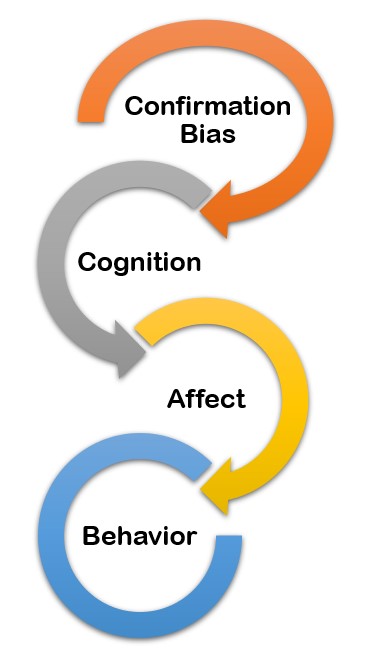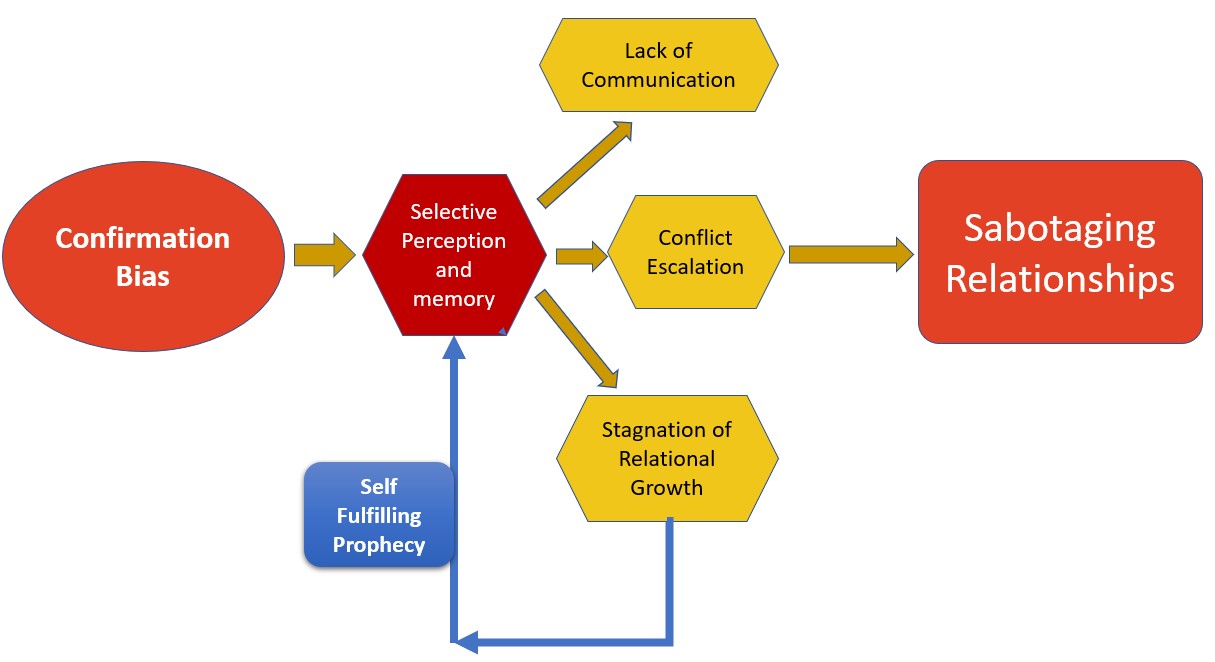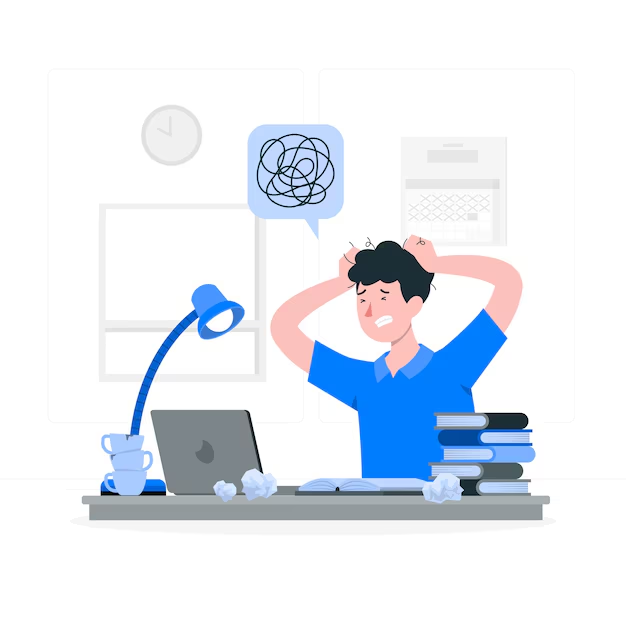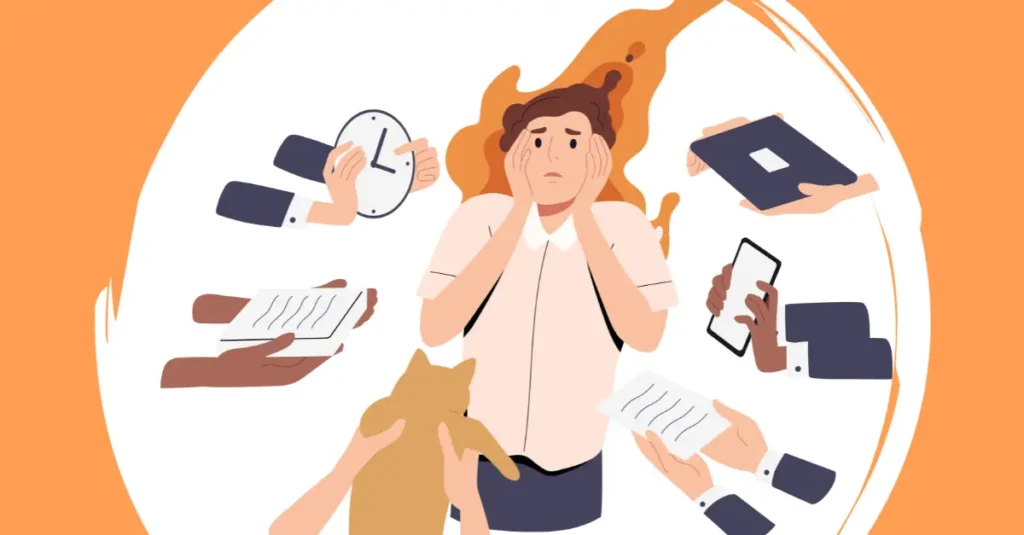To understand the influence of Confirmation Bias imagine the following situation:
You recently joined a new friend group and were added to their group chat. Eager to connect, you suggested an idea for a group outing, but no one has responded, even though everyone has seen the message. A few days have passed with continued silence.
A. Reflect on Your Thoughts: What thoughts come to your mind in this situation?
-
- I probably shouldn’t have suggested something as a new member; they might find it off-putting. They’re not interested in including me and might not see me as a part of the group.
- They might not be ready to make plans yet, or have other priorities right now. Or Maybe the group isn’t super active, and silence is just normal.
B. Consider Your Feelings: How do you feel about the group and yourself?
- Nervous & self-conscious about trying to fit in. Frustrated for putting yourself out there.
- Content, without feeling judged by the lack of response. Relaxed, believing there’s no urgency to establish a bond immediately.
C. Think About Your Actions: What action would you be most likely to take next?
- Refrain from suggesting anything else and stay more reserved in the group chat. Start distancing yourself or become less active in the group.
- Wait a few more days and then send a casual follow-up message. Try to engage in group conversations naturally without putting pressure on plans.
Identify Your Natural Assumption: What was your initial assumption about the situation?
- They think I’m boring or unlikable.
- The silence may have nothing to do with me personally, They might be genuinely busy.
Notice that if your natural assumption about the situation is negative (e.g., they think I’m boring or unlikable), you might have chosen the first responses for the three reflective questions. Conversely, if you assumed the silence is not personal, you are likely to select the second response. Hence, we choose the options that resonate most with our natural assumption.
This is how confirmation bias works— it can shape our view of the same situation in entirely different ways based on what we initially believe. This view can affect our cognition (thoughts), emotions (feelings), and behaviors (actions). Given that confirmation bias can influence various aspects of our lives, it’s essential to understand what cognitive bias is and why it occurs.

What is Confirmation Bias?
According to American Psychological Association (APA), the tendency to gather evidence that confirms pre existing expectations, typically by emphasizing or pursuing supporting evidence while dismissing or failing to seek contradictory evidence.
Confirmation Bias (CB) is a flaw in the human cognition that restrains us to see entirety of given situation. It is like horse blinders that only allows us to see the part of information that we are willing to see. It lets us see only those things that we already agreed to. It not only influences our ability to observe the world around us, but also ability to store and remember the information that aligns with our notions and attitudes.
Given that you can imagine, it can cause serious issues in our life.
Confirmation bias in Relationships
1. Selective Perception and Memory
Individuals often recall or give more weight to behaviors that confirm their pre-existing views of their partner. For instance, if someone believes their partner is inattentive, they may focus exclusively on instances that support this belief, ignoring occasions when the partner has been caring or supportive (Lord, Ross, & Lepper, 1979).
2. Self-Fulfilling Prophecies
When one partner holds a negative belief about the other, it can lead to behaviors that inadvertently elicit responses confirming the initial expectation. For example, persistent distrust may cause one partner to act defensively, prompting the other to withdraw or react in ways that reinforce the distrust, thereby perpetuating a cycle of negativity.
3. Impaired Communication
Confirmation bias can hinder open and effective communication. Partners may dismiss or downplay information that contradicts their beliefs, leading to misunderstandings and a lack of genuine dialogue. This selective attention can prevent the resolution of conflicts and reduce mutual understanding.
4. Escalation of Conflict
During disagreements, individuals influenced by confirmation bias may interpret ambiguous comments as evidence of their partner’s negative traits. This misinterpretation can exacerbate conflicts, as each partner may become more entrenched in their perspective, further straining the relationship.
5. Stagnation of Personal and Relational Growth
By continually filtering out information that challenges their beliefs, partners may miss opportunities to adapt or improve their behaviors. This stagnation can prevent the relationship from evolving positively, limiting both personal growth and the development of healthier interaction patterns.

Ways to mitigate confirmation bias
1. Cultivate Self-Awareness
Developing mindfulness about your own thought patterns is essential. Regular self-reflection can help you identify when you might be selectively interpreting your partner’s behavior in a way that reinforces your preexisting beliefs (Nickerson, 1998). Journaling or engaging in reflective practices can support this awareness.
Read more on Self-talk : powerful tool for self awareness
2. Actively Seek Disconfirming Evidence
Consciously look for information or behaviors from your partner that challenge your assumptions. By making an effort to notice positive actions alongside negative ones, you can form a more balanced and realistic view of your relationship (Lord, Ross, & Lepper, 1979).
3. Engage in Open Communication
Encourage honest dialogue with your partner. Sharing perceptions and listening to their perspective can help uncover misunderstandings. Active listening and empathetic responses create an environment where both partners feel validated, reducing the likelihood of biased interpretations.
4. Practice Cognitive Restructuring
When you notice automatic negative assumptions, take a moment to pause and reassess. Challenge your initial interpretations by considering alternative explanations for your partner’s behavior. Cognitive-behavioral techniques can help reframe these thoughts and reduce bias.
5. Seek External Support
Sometimes an objective perspective can be invaluable. Relationship counseling or cognitive-behavioral therapy (CBT) can provide tools to identify and manage confirmation bias, offering strategies tailored to your unique relational dynamics.
Conclusion
While confirmation bias is a natural cognitive process, implementing these strategies can help mitigate its effects, fostering healthier and more balanced interactions. By being open to new perspectives and actively challenging preexisting beliefs, you and your partner can build a more authentic and resilient relationship.
References
Lord, C. G., Ross, L., & Lepper, M. R. (1979). Biased assimilation and attitude polarization: The effects of prior theories on subsequently considered evidence. Journal of Personality and Social Psychology, 37(11), 2098–2109. https://doi.org/10.1037/0022-3514.37.11.2098
Nickerson, R. S. (1998). Confirmation bias: A ubiquitous phenomenon in many guises. Review of General Psychology, 2(2), 175–220. https://doi.org/10.1037/1089-2680.2.2.175
Subscribe to PsychUniverse
Get the latest updates and insights.
Join 3,022 other subscribers!
Niwlikar, B. A. (2025, February 20). Is Confirmation Bias Sabotaging your Relationships? 5 Ways to mitigate it. PsychUniverse. https://psychuniverse.com/confirmation-bias-in-relationships/




Pingback: Powerful Insights Into Confirmation Bias- What, 3 Whys, 4 Hows, and 4 Whens - PsychUniverse
Pingback: Psychological Echo : As you sow, so shall you reap - PsychUniverse